Historic Neighborhoods and Modern Transportation in Puerto Rico
I had the privilege of traveling to San Juan, Puerto Rico last week for a short vacation. The air was breezy and warm, the sun shone every day and the beach was heavenly. But it was the design of the neighborhoods that fascinated me most. San Juan – at least the little slice that I saw of it – demonstrated a commendable combination of both historic design principles and modern transportation concepts.
We stayed near Old San Juan, a district full of colorful mixed-use buildings, charming narrow streets and historic monuments. It was quite touristy, especially because of the massive cruise ships that docked there each day and let their patrons out to roam. But in the midst of the tourists, there were also a whole lot of local residents going to school or doing their shopping.
Old San Juan has many of the traditional, historic characteristics I love to see in a community (and wish I had more of in my own community):
- mixed-use buildings with a café or shop on the bottom floor and one or two stories of apartments above;
- narrow streets with parking on one or both sides, inducing cars to drive slowly;
- uncontrolled intersections where cars simply slow to let pedestrians pass, without needing lights or stop signs to direct everyone;
- communal squares and gardens for eating lunch, spending time with a friend or petting one of the local cats; and
- thorough, meaningful use of space with almost no surface parking lots or vacant buildings.
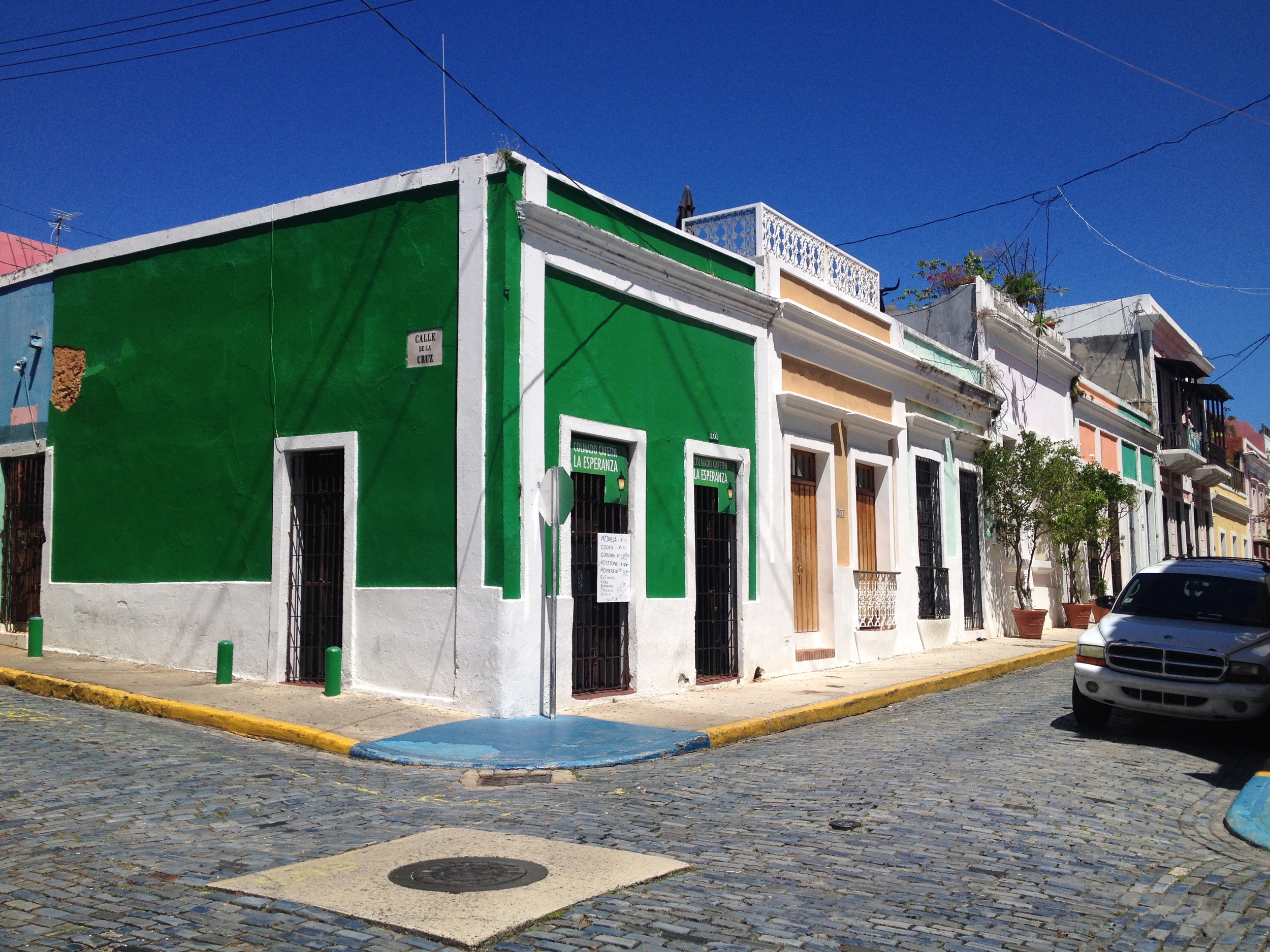
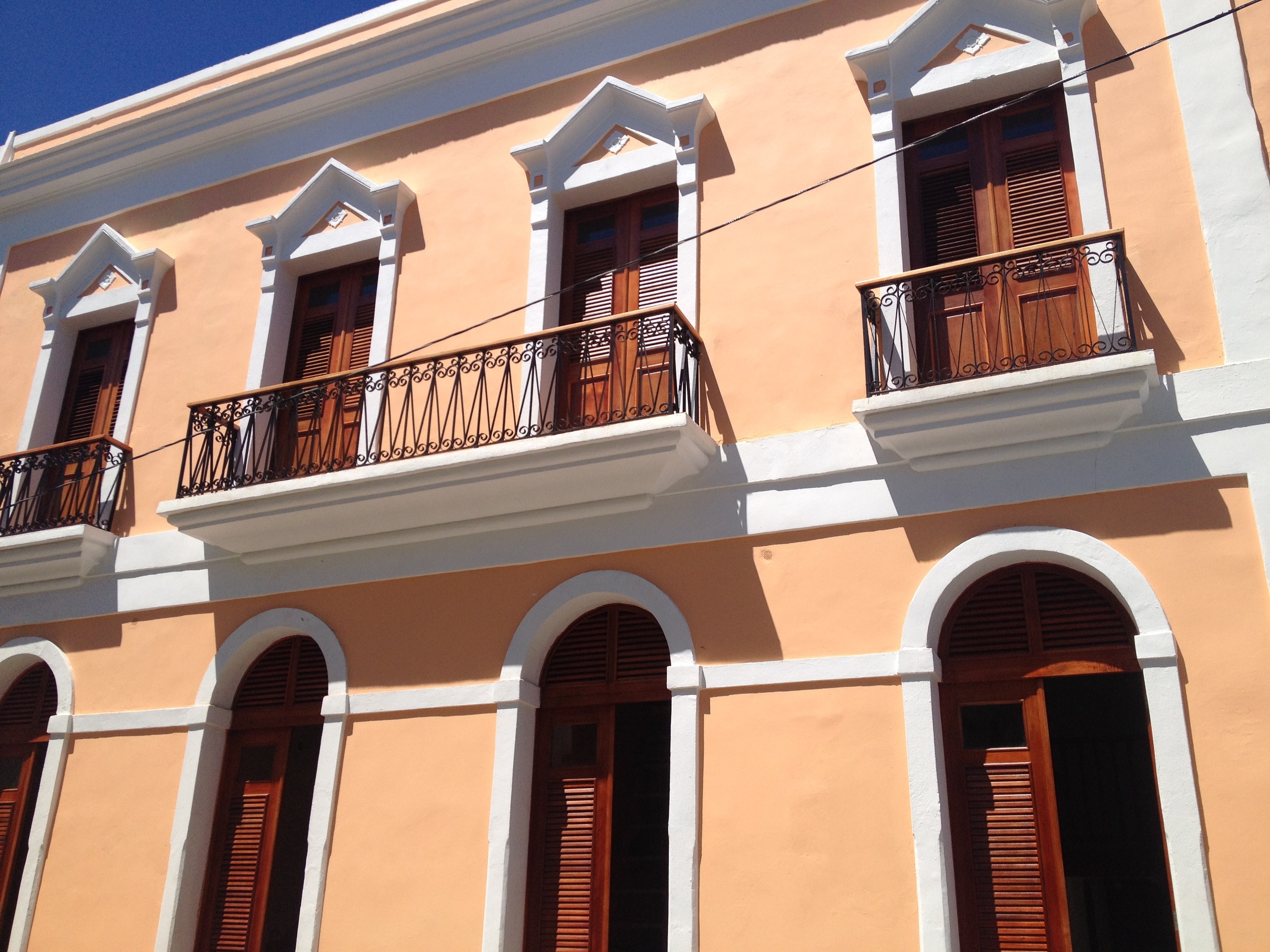

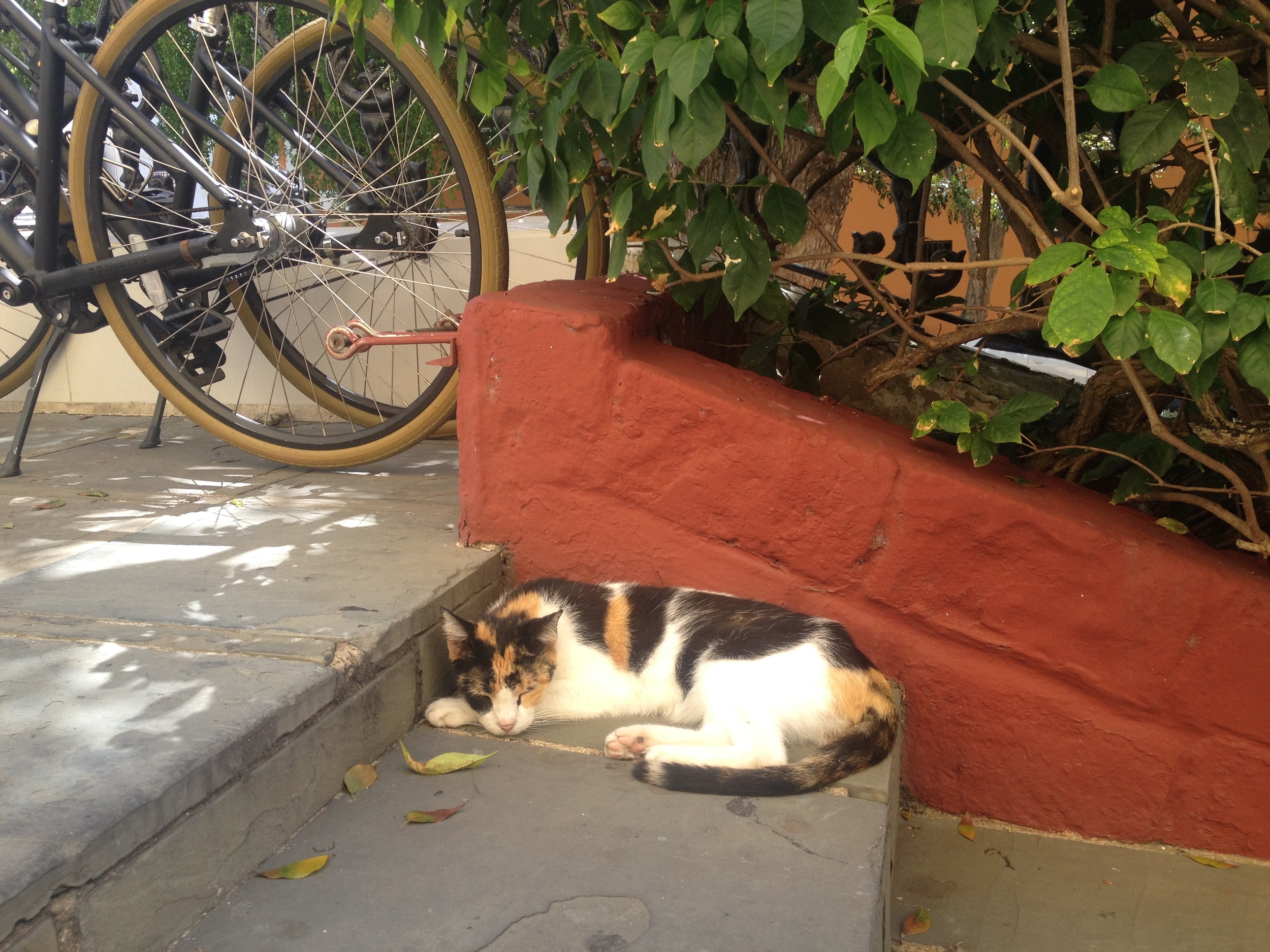
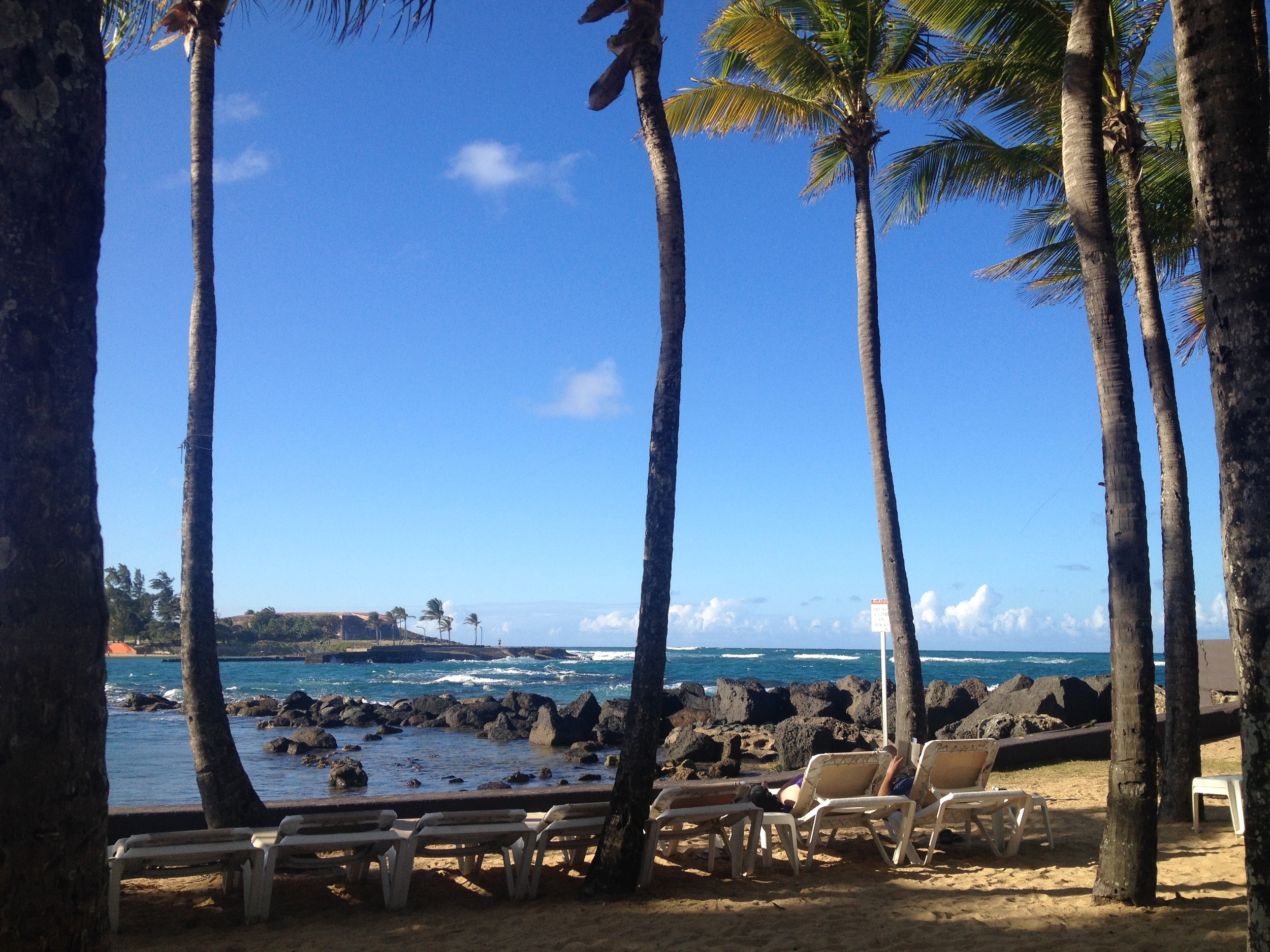
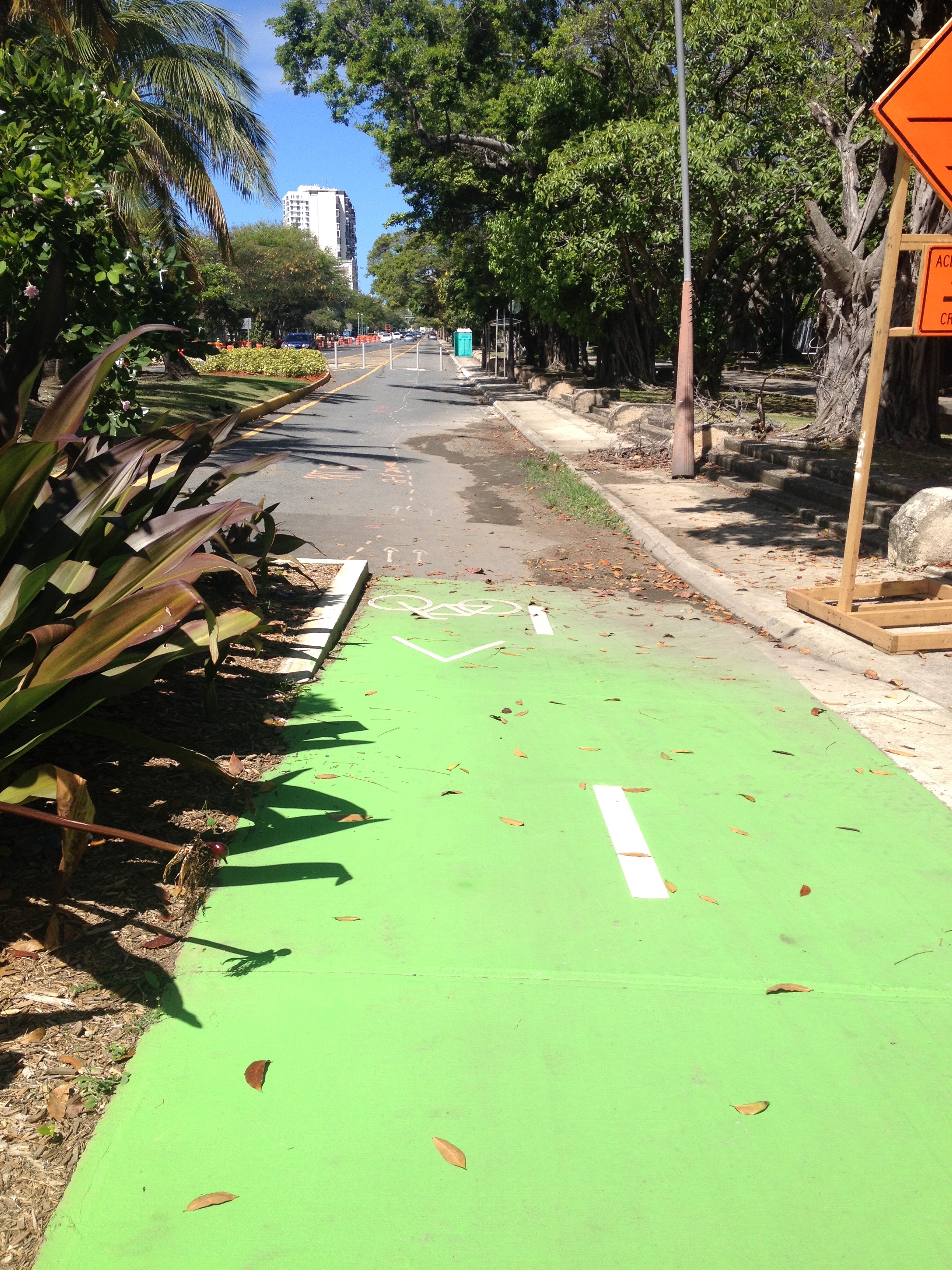
Just outside this historic neighborhood however, the city is interconnected with modern transportation options like protected bike lanes and designated bus streets. Yes, the buses in many parts of San Juan drive on their own streets! I was thrilled to see and experience this. It meant that what would have been a rather unpleasant 45 minute walk from our hotel into the historic district was a mere 4 minute, 75 cent bus ride. San Juan also has a small rail line, although I didn't have a chance to ride that.
Utilizing old buildings has enabled Old San Juan to not only look attractive and draw tourists but, more importantly, remain affordable for a population that is not wealthy. The same goes for preserving the historic design of the streets--it keeps pedestrians (local or visiting) happy and the cost of upkeep on narrow roads where cars travel at slow speeds are quite modest.
Meanwhile, utilizing modern transportation concepts like protected bike lanes and designated bus lanes enables the different neighborhoods of San Juan to be interconnected, ensuring that residents can travel to jobs and homes around the city. All in all, this beautiful, vibrant city made me eager for another visit soon. It is heartening to see Strong Towns principles in action.
Strong Towns contributor, Andrew Price, also took a recent trip to San Juan, so you can expect more analysis and photos of the city next week.


Rachel Quednau serves as Program Director at Strong Towns. Trained in dialogue facilitation and mediation, she is devoted to building understanding across lines of difference. Previously, Rachel worked for several organizations fighting to end homelessness and promote safe, affordable housing at the federal and local levels. Rachel also served as Content Manager for Strong Towns from 2015-2018. A native Minnesotan and honorary Wisconsinite, Rachel received a Masters in Religion, Ethics, and Politics from Harvard Divinity School and a Certificate in Conflict Transformation from the Boston Theological Interreligious Consortium, both in 2020. She currently lives in Milwaukee, Wisconsin, with her husband and young son. One of her favorite ways to get to know a new city is by going for a walk in it.